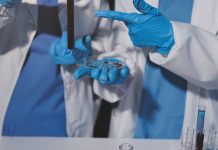Scientists at Ruhr-Universität Bochum in Germany and the University of New South Wales in Australia have adopted the principle from enzymes that produce complex molecules in multi-step reactions. The chemists used carbon dioxide to produce ethanol and propanol.
The team led by Professor Wolfgang Schuhmann from the Centre for Electrochemistry in Bochum and Professor Corina Andronescu from the University of Duisburg-Essen, together with the Australian team led by Professor Justin Gooding and Professor Richard Tilley, reported their research in the Journal of the American Chemical Society.
“Transferring the cascade reactions of the enzymes to catalytically active nanoparticles could be a decisive step in the design of catalysts,” says Wolfgang Schuhmann. In order to imitate this concept, the researchers synthesized a particle with a silver core surrounded by a porous layer of copper. The silver core serves as the first active centre, the copper layer as the second. Intermediate products formed at the silver core then react in the copper layer to form more complex molecules, which ultimately leave the particle. The German-Australian team showed that the electrochemical reduction of carbon dioxide can take place with the help of the nanozymes. Several reaction steps on the silver core and copper shell transform the starting material into ethanol or propanol. “There are also other nanoparticles that can produce these products from CO2 without the cascade principle,” says Wolfgang Schuhmann. “However, they require considerably more energy.”
Nanoparticles Help in Converting CO2 to Valuable Products
Advertisement
































